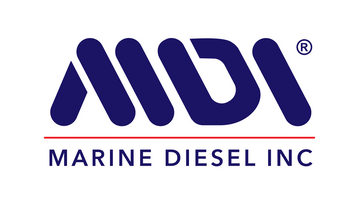OEM vs. Aftermarket Marine Parts: What’s Best for Your Boat?
When your boat needs new parts for its marine diesel engine, transmission, or generator, one of the first questions is: should you buy OEM marine parts (Original Equipment Manufacturer) or go with aftermarket marine parts? The choice affects not only the performance of your boat but also your long-term costs and peace of mind.
What Are OEM Marine Parts?
OEM boat parts are built by the same manufacturer that designed your original equipment. These are the exact replacement parts your engine was made to run with.
Advantages of OEM Parts
· Superior Quality & Reliability: Made with high-grade materials and tested under strict standards for durability in demanding marine environments.
· Perfect Fit & Performance: Engineered to the exact specifications of your model for seamless installation and dependable operation.
· Warranty Protection: Most OEM marine parts come with manufacturer warranties, offering security if a part fails prematurely.
Drawbacks of OEM Parts
· Higher Cost: OEM parts are more expensive due to brand reputation, engineering, and testing investments.
· Limited Sources: Usually only available through authorized marine diesel dealers or distributors.
· Few Custom Options: OEM parts match factory specs but rarely offer performance upgrades.
What Are Aftermarket Marine Parts?
Aftermarket boat parts are produced by third-party manufacturers rather than the original engine maker. They are widely available, but quality and performance can vary.
Advantages of Aftermarket Parts
· Lower Price: Typically cheaper than OEM marine parts, making them attractive to budget-conscious boat owners.
Risks of Aftermarket Parts
· Inconsistent Quality: Some brands rival OEM, but others cut corners, risking premature failure.
· Fit & Performance Issues: Parts that don’t match OEM specs may not install cleanly or function reliably.
· Risk of Damage: Low-quality components, such as impellers or fuel lines, can break down and damage your marine diesel engine.
· Warranty Concerns: Some boat and engine manufacturers void warranties if aftermarket parts are used.
· Long-Term Expense: While cheaper upfront, failures can lead to costly marine engine repairs.
Why OEM Marine Parts Cost More
It’s not just the brand name. OEM marine parts often carry a higher price because they include:
· Brand Reputation & Reliability – Peace of mind in knowing you’re buying genuine parts.
· Research & Testing – Significant investment in development ensures optimal performance.
· Strict Quality Control – OEM parts are consistent, reliable, and built to fit right every time.
· Factors to Weigh Before Buying Marine Parts
· When comparing OEM vs. aftermarket marine engine parts, consider:
· Affordability: Balance upfront cost with long-term reliability.
· Quality Assurance: OEM ensures it. With aftermarket, research brands and reviews.
· Warranty & Support: OEM almost always offers stronger coverage.
· Compatibility: OEM parts are guaranteed to fit; aftermarket may vary.
· Availability: Check whether OEM parts are in stock or if reputable aftermarket alternatives are easier to source.
Final Takeaway
For marine diesel engines, transmissions, and generators, the reliability of OEM marine parts often outweighs the savings of aftermarket options. While aftermarket parts may work in certain cases, the investment in genuine OEM parts ensures compatibility, warranty protection, and peace of mind on the water.
